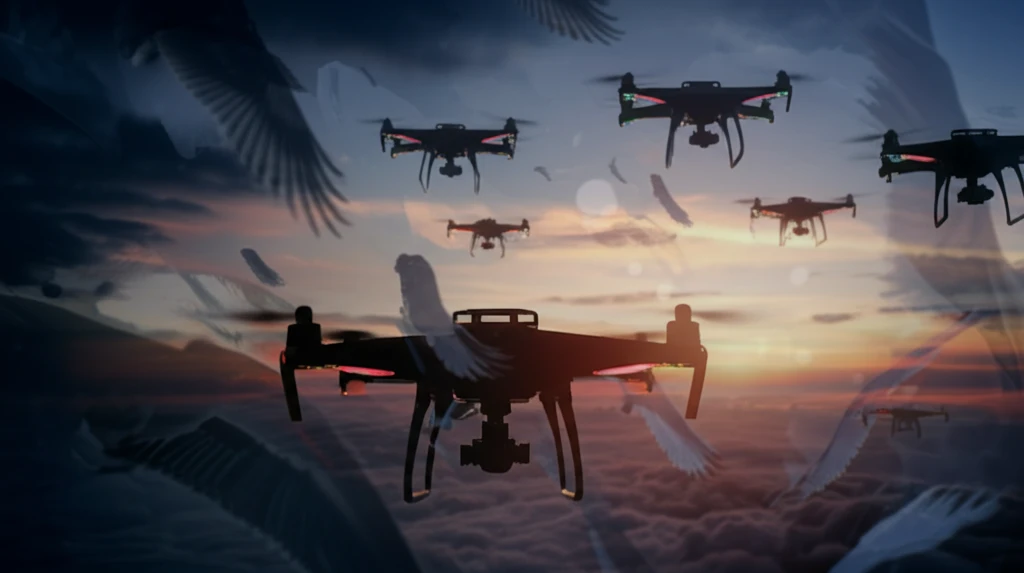
Sky High Harmony: How Drone Flocks Are Mimicking Bird Behavior for Smarter Tech
"Unlocking the Secrets of Bird Flocking for Next-Gen Drone Coordination"
Imagine a sky filled with drones, not as individual entities, but as a synchronized flock, moving with the same grace and efficiency as a murmuration of starlings. This isn't a scene from a sci-fi movie, but a rapidly advancing area of research that blends the natural world with cutting-edge technology. Scientists and engineers are increasingly turning to nature for inspiration, and the complex, coordinated movements of bird flocks offer a treasure trove of insights for improving drone technology.
Unmanned aerial vehicles (UAVs), or drones, are becoming integral to various industries, from agriculture and surveillance to delivery services and search-and-rescue operations. As their roles expand, so does the need for more sophisticated control systems. Flying drones in coordinated formations offers numerous advantages, including increased efficiency, improved safety, and the ability to tackle more complex tasks. However, achieving seamless coordination among multiple drones presents significant technical challenges.
Enter the world of bird flocking. For centuries, humans have marveled at the seemingly effortless way birds move together in large groups. These flocks aren't guided by a single leader, but rather by a set of simple, decentralized rules that allow each bird to react to its neighbors. By understanding and mimicking these rules, researchers hope to create drone systems that are more adaptable, robust, and capable of handling real-world complexities.
Why Bird Flocking? The Secrets to Nature's Swarm Intelligence

Bird flocking, at its core, is a stunning example of what's known as swarm intelligence. It demonstrates how a large group of individuals, each following simple rules, can collectively achieve complex and coordinated behavior. The beauty of this system lies in its decentralization – no single bird is in charge. Instead, each bird reacts to the movements of its immediate neighbors, creating a ripple effect that propagates through the entire flock.
- Separation: Each bird maintains a minimum distance from its neighbors to avoid collisions.
- Alignment: Each bird aligns its velocity with the average velocity of its neighbors.
- Cohesion: Each bird moves toward the average position of its neighbors.
The Future of Drone Technology: Inspired by Nature
As drone technology continues to evolve, the principles of bird flocking offer a powerful blueprint for creating more intelligent, efficient, and adaptable systems. By understanding and mimicking nature's elegant solutions, researchers are paving the way for a future where drones can work together seamlessly to solve complex problems, improve our lives, and unlock new possibilities.
